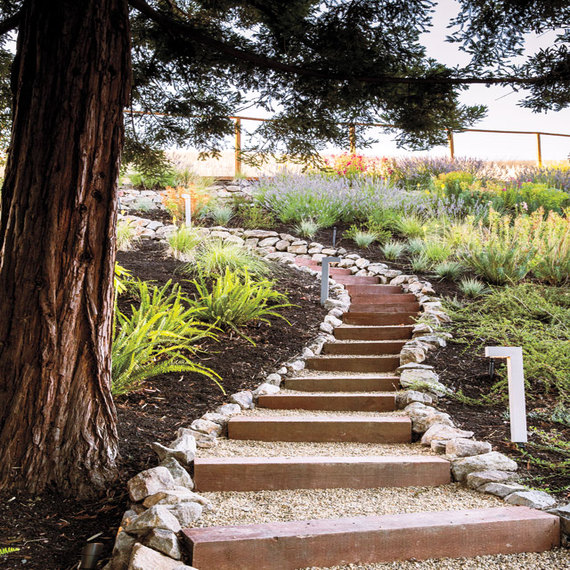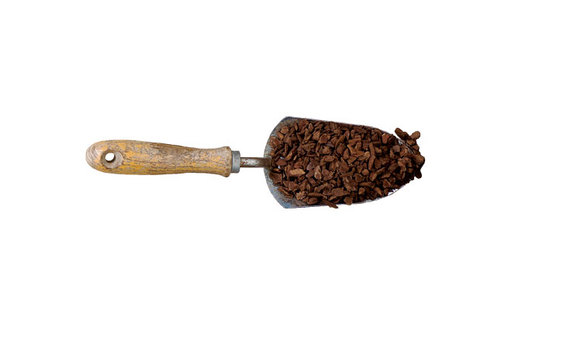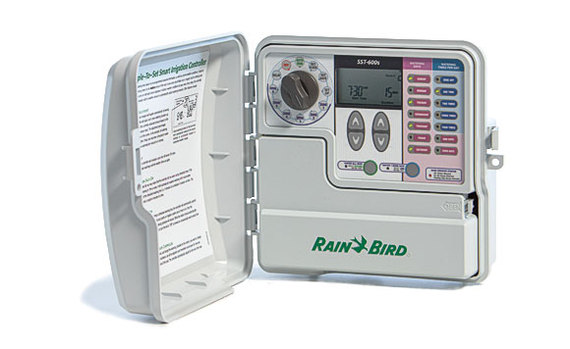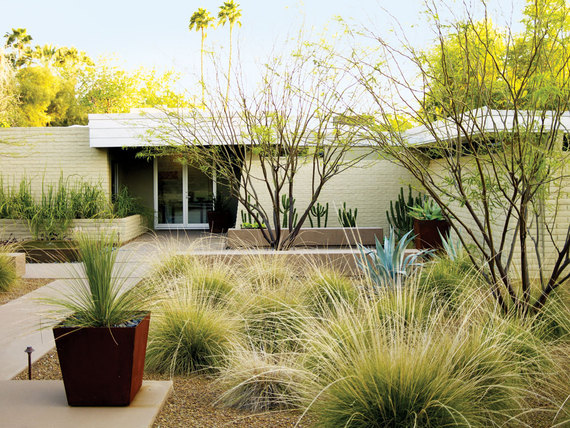By Kathleen Brenzel
Governor Brown's call for mandatory water cutbacks for all Californians has a lot of us wondering what more we can do to save water, especially outdoors. And how can we get our gardens through the worst drought in our history? Here's a strategy.
Save established trees first.
They're costly to replace and have the greatest impact on your landscape. (Ash, birch, poplar, Coast redwood, magnolia and Japanese maple are often the first trees to show signs of drought stress). Give the trees a deep irrigation within the next two months so they'll be better equipped to withstand drought. Coil soaker hoses around the plants at and inside the drip line, let them moisten the soil 18 to 24 inches down.
Monitor shallow-rooted shrubs.
On azaleas, rhododendrons and young camellias, watch for wilting or drooping new growth. Build basins around them (make sure the water won't pool against the trunks), and give them a deep soak this month.
Stop watering the lawn.
When it turns brown, just keep it mown and tidy. If your grass is Bermuda, it will green up again in fall (assuming we get rain!). If it's another type of grass, it's easy (and relatively inexpensive) to replace in fall.
Mulch.
Put down a layer of mulch about two inches thick around plants, to help keep moisture in the soil. Ground bark is a good all-purpose type. (Watch: How to Mulch.)
Check your irrigation system.
A leaky irrigation system wastes water fast. Watch yours run, then adjust sprinkler heads so they won't wet sidewalks or driveways. Be sure your drip emitters put water into the soil near plant roots.
Water carefully.
Use soaker hoses or drip irrigation to put water where it's needed most: directly over plant roots. Irrigate plants in the early morning when air is still and cool.
Try hi-tech watering.
Consider installing a smart irrigation controller, if you don't already have one, to program and manage your watering. The best ones now use Wi-Fi connections or in-ground sensors that will adjust watering according to the weather.
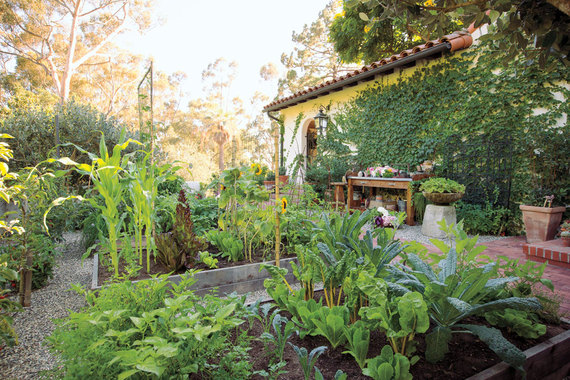
photography by Thomas J. Story
In the veggie garden...
Snake soaker hoses through rows of veggies, such as beans and tomatoes. Water cane berries sparingly after harvest. (In coastal climates, established blackberry plants can get through the summer on no water, raspberry plants on very little). Shade strawberries by propping row covers or shade cloth over beds; allow good ventilation. Space citrus waterings every four to six weeks; irrigate plants to a depth of 18 to 24 inches. The season's fruit may suffer, but the trees should survive. Let deciduous fruit trees go dry after harvest, and irrigate only if trees wilt.
Group containers.
That way, they'll help shade and help cool one another. Limit your plant choices to un-thirsty succulents, yuccas and more. Irrigate the plants as needed, using clean shower water you've saved in buckets while waiting for the water to warm up.
Cover the pool.
Covering an unused swimming pool stops 90 percent of water evaporation waste. For a 400-square-foot pool, that's almost 1,000 gallons a month. The safest covers are track mounted.
Plan ahead.
Watersmart gardens are the new normal in California. Rethink your yard. When fall planting time comes around, replace the lawn with permeable paving (watch our video!), or with un-thirsty plants. In this front yard -- a grid of deer grass (Muhlenbergia rigens) and blue agaves carry the show. Or surround a small meadow of low-water red fescue, with yellow-tinged Aeonium "Kiwi," orange-flowered aloes and red kangaroo paw.

